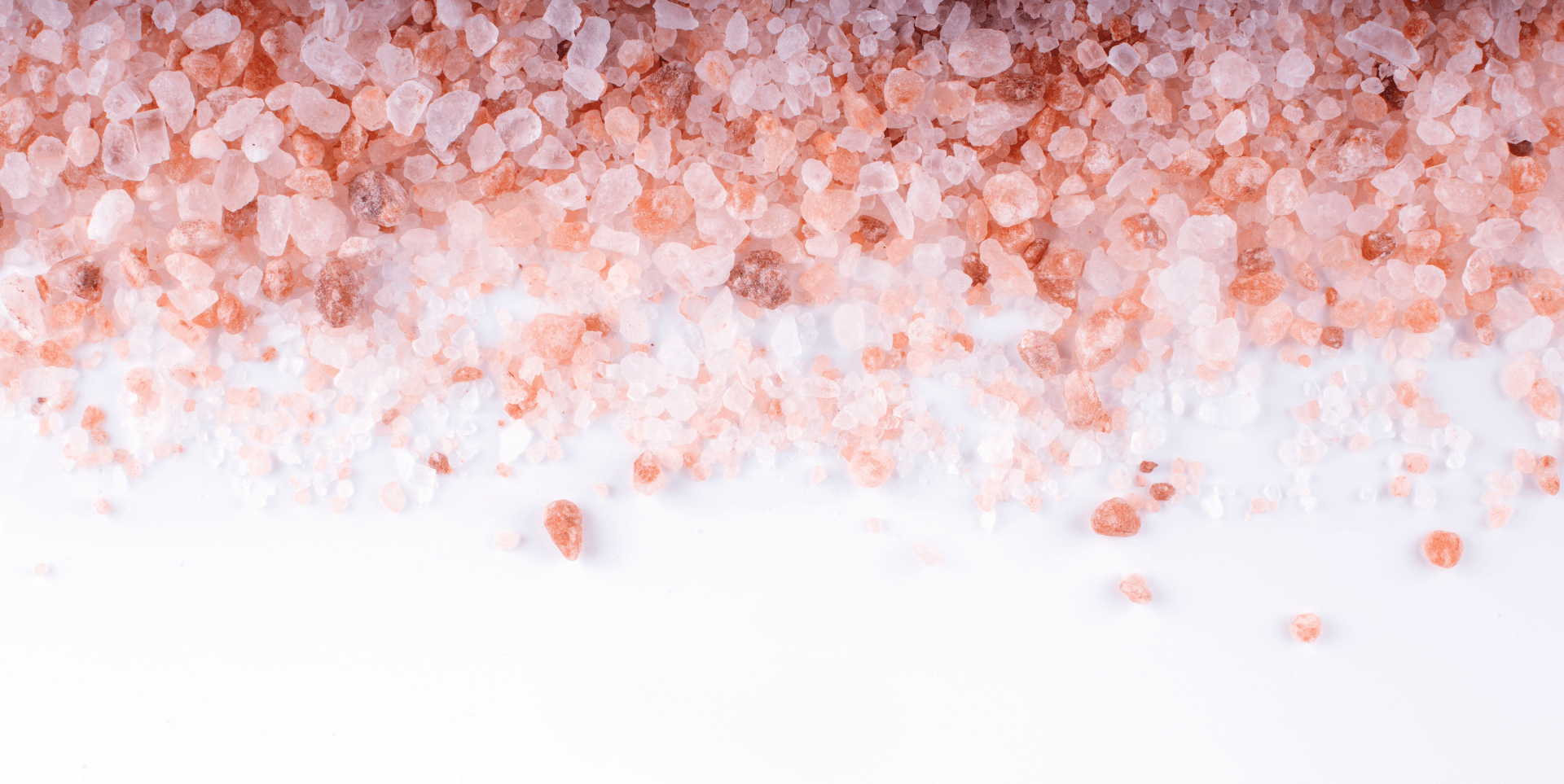Let's Get Salty - The Benefits of Himalayan Salt
Table Salt vs Sea Salt

Salt is the great preservative. Humans have been using it for just about ever to preserve meat and fish, long before refrigeration ever existed. And despite all the low-sodium diets and products out there, salt is actually GOOD for you! Just not the kind of salt that’s in processed foods, many canned foods, and probably adorning your table in a cute little shaker.
Most salt you find in grocery store items is refined salt (also known as
BAD salt). Most of this comes from underground salt mines and goes through a chemical process that strips it of many natural minerals before it gets to your table. Often, during this process, other undesirable elements are absorbed or added to the salt such as calcium carbonate, magnesium carbonate, and aluminum hydroxide.
Almost all processed foods are made with high amounts of refined salt. And most of us LOVE us a processed tater tot, Lean Cuisine or chicken nugget every “once in a while.” The trouble with processed foods is the combination of salt, sugar and fat. These three in tandem stimulate the brain to release dopamine and at the same time make our brains forget that we’re full. We eat more because it makes us happy and feel good in the short term, but the long term consequences are severe (weight gain, heart disease, depression, fatigue, etc.).
Processed foods also increase water retention. This can lead to edema, high blood pressure and poor circulation. As the body tries to rid itself of unrefined salt, it has to work really hard and it gets clogged down, which can lead to gallbladder and kidney stones.
Unrefined/Natural Salt
Now that I’ve told all about bad salt, let’s talk about GOOD salt. Unrefined, or natural salt is essential for many bodily processes:
- Regulates water content, sleep, blood pressure (unlike refined salt which increases blood pressure)
- Replenishes electrolytes when heavily sweating
- Promotes healthy pH balance in the cells (especially in the brain), sinus and vascular health, bone strength, libido
- Aids with blood sugar handling processes
- Helps create stomach acid necessary for digestion
- Prevents muscle cramps
Good Salts to Put on Your Table
- Himalayan Salt (AKA crystal salt) - comes from the Himalayan mountains in Pakistan where deposits laid down eons ago. Does not need to go through a chemical process in order to be ingested which means it is not refined.
- Sea Salt - though there is some debate about the cleanliness of oceans due to excessive human pollution, I believe the pros of sea salt outway the potentially minimal cons.
- Sea salt has a higher mineral content than Himalayan salt.
- Waves help oxygenate sea water, and sunlight and marine microorganisms purify the oceans by breaking down pollutants put into them.
- Celtic Sea Salt has to pass the European and Australian Certification’s rigid organic standards for purity before being shelved in grocery stores.
NOTE: Beware of products labeled “sea salt” that are not truly unrefined sea salt.
- Redmond’s Real Salt - harvested from an ancient, dried up sea in Utah and naturally contains more than 60 trace minerals.
Warning!
Salt cravings can be a warning sign of HPA-D (formerly known as adrenal fatigue). The adrenal glands release a hormone called aldosterone, which in turn tells the kidneys to absorb sodium. If the body is experiencing HPA-D, too little of this hormone is released and the body can’t process sodium correctly, leading to excessive levels of salt in the body. This can result in dehydration, frequent urination, low blood pressure and dizziness. Read Bridget’s story about how her low sodium levels contributed to infertility issues because of HPA-D (LINK to Bridget’s case study).
Try This
Eating potassium can help keep your sodium levels in check! To find out more, read my blog Pretty in Potassium.
So go ahead--get salty! Just make sure it’s the right kind of salt.
If you are experiencing any of the symptoms mentioned in this article (weight gain, depression, fatigue, excessive thirst, dizziness, etc.), please contact me now. Through a
Health Discovery Session, we can get you started on a plan that is specific to you and get you back to healthy and feeling great.
Don't Miss Out On More!

Heidi Toy FNTP
I help people all over the world heal by identifying and treating the root cause of their body imbalances. Through diet and nutrition, I guide them towards wholeness and balanced lives.
Heidi Toy Functional Medicine Blog














































































































